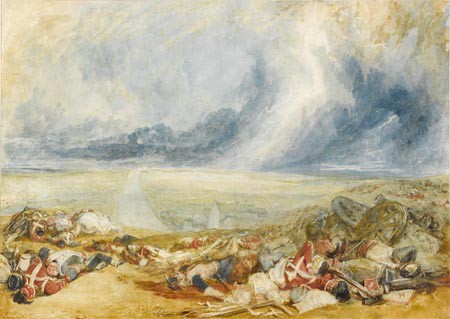Napoleon’s final battle has become the stuff of legend. For the British, the memory begins on the evening of 15 June 1815, as Lady Richmond gave a ball in Brussels, sobered by the news of the arrival of the French. The proximity to the battlefield amplified the effect on the civilians. The rapid chain of events that followed was a factor of this trauma; Katherine Arden, the daughter of Lord Alvanley, recalled: “dawn broke and it was beautiful, and before 7 we saw 12, 000 Brunswickers, Scots and Englishmen pass beneath our window, of which a third were dead before nightfall.” The influx of prisoners and the injured also made a lasting impression, according to Fanny Burney’s account on 24 June: “the unlucky prisoners are led in continuously, in a state so awful that the streets seem pestilent when they pass by in wagons. The dead! The piles of the dead are currently being buried by 3, 000 peasants.” These experiences appear but little in the accounts which followed the battle, in which the adopted tone is classically heroic. Some authors did make an exception, however. Lord Byron’s visit to the battlefield in 1816 was one such exception. It inspired the vision of such dehumanising carnage in the third song of Childe Harold, employing in textual form some of the brutality evident in Goya’s paintings.
Last noon beheld them full of lusty life,
Last eve in Beauty’s circle proudly gay,
The midnight brought the signal-sound of strife ;
The morn the marshalling of arms – the day,
Battle’s magnificent stern array!
The thunder-clouds closed o’er it, which when rent
The earth is covered thick with other clay,
Which her own clay shall cover, heaped and pent,
Rider and horse – friend or foe – in one red burial blent.
In the second edition of his travel guide, Charles Campbell quotes this verse in regards to the battle; an indispensable step on every tour of the continent. In 1817, when J.M.W Turner submitted his name for the competition for the best painting of the battle, he had the winning work. Even though he had only spent a day at the battlefield, he had made scores of sketches in a journal now conserved at the Tate gallery. The final painting was first shown in 1818 at the Royal Academy, accompanied by the famous verse from Childe harold. Constructed around the Hougoumont farm, where the right arm of the British army were based, he shows the wives of the soldiers searching for the corpses of their husbands by lamplight. This aquarelle is one of the studies he made for the painting. Also centred on Hougoumont, it shows a mix of debris and corpses, and there appears the monogram of George III and the N of Napoleon. Inextricably united in death, French infantrymen and cavalry lie dead among the Scots Guards – embodying the accounts of the survivors and Lord Byron’s versification.
Emilie Robbe (tr. AM, July 2013)
This painting was shown as part of the exhibition Napoléon et l’Europe at the Musée de l’Armée in Paris, from 27 March 2013 to 14 July 2013.


